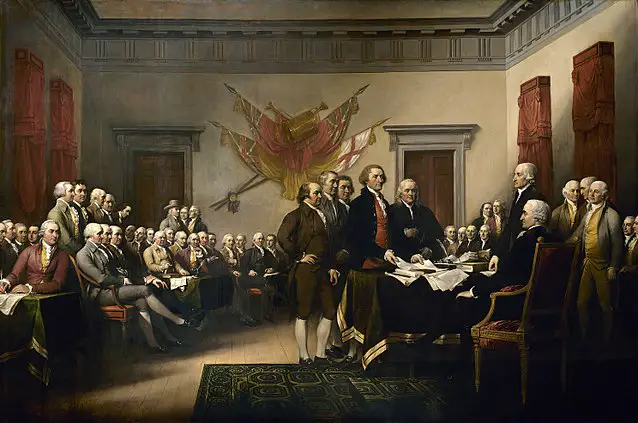Slaves and the Revolutionary War
It’s important to recognize that while the term “slave” isn’t listed in the Constitution, the framers made a decision to include what is called the “Three-fifths clause.” This includes 3/5 of the slave population of the south so that those states could have extra representation. This continues through to today with the “Electoral College” vote.
The original Constitution also allowed the Atlantic slave trade for 20 years and another clause that required that slaves that had runaway be returned to their owners. The federal government also had the ability to put down slave rebellions.
All of this control and demeaning didn’t stop the African slaves from trying to fight in the Revolutionary War.
Many of the founders were against slavery, and about 25 of the 55 Convention delegates were slave owners. Those that were antislavery including Benjamin Franklin and Alexander Hamilton.
These radical differences in ideas caused many problems in trying to establish a new and free country. The topic became so heated that many of the delegates from the slave states would not have continued in the discussions had freeing slaves been included in the Constitution.
Few mention the fact that the battles of Lexington and Bunker Hill included African American soldiers. However, Congress decided to now allow blacks from enlisting, and in 1775 they passed a law stating so.

This was a compromise made for the southern slave owners. Lord Dunmore had promised to free slaves that enlisted in the British army, and when Congress found that out, they reversed the law.
African Americans fought bravely throughout the American Revolution. They were involved in many of the battles, including Ticonderoga, Bunker Hill, and it was even a slave that was rowing the boat that led George Washington across the Delaware River.
It’s believed that around 5,000 slaves and freed Black Americans proudly served during the Revolutionary War in the Continental Army.
As the war continued, a lot of states such as Virginia were already giving those Black slaves who had served their freedom.
Black slaves had served in the military, and at least one-third of the prewar slaves had escaped to freedom. However, some weren’t happy about the loss of slaves and one American named Silas Deane, created a plan to incite a slave uprising in Jamaica to try to prove that slaves were untrustworthy.
Other plans were created to encourage slaves to be part of the military and included compensating the slave owners as well as offering freedom at the end of their service. These plans failed due to the overwhelming pressure of the southern state slave owners.
Southern states didn’t want the African slaves to join the army, but they let any objections go for the use of slaves and free blacks to serve as a seaman.
The reward of potential freedom allowed many blacks to do both routine jobs as well as act as sailors with privateers and gunners.
It took many more years for African Americans to achieve freedom from slavery.
Q&A:
What is the “3/5ths Clause” in the U.S. Constitution?
This includes 3/5 of the slave population of the south so that those states could have extra representation
What were the first two colonial battles that had Black slaves as part of the military?
Lexington and Bunker Hill
What did the 1775 Congressional law dictate for blacks?
it kept them from enlisting in the military
How many black slaves and freed blacks are believed to have served in the Continental Army?
5,000
What were some of the jobs that both black freemen and slaves participated in during the war?
seaman, routine jobs, sailors with privateers, gunners
What percentage of slaves are believed to have escaped to freedom after they served in the war?
1/3



